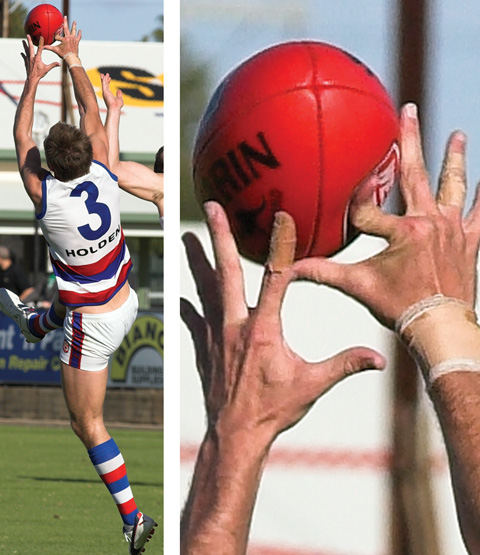The mark, especially the “high mark” and “spectacular grab”, distinguishes Australian Rules football from more earthbound varieties.1 Photographs taken at a recent South Australian National Football League match revealed a high mark where hyperextension of the proximal interphalangeal joint of the right index finger occurred. Interview with the player and examination of the affected digit 4 days after the match revealed no injury to the finger, although some bruising of the right thenar web space and mild tenderness of the first metacarpophalangeal joint were evident.
A previous report concluded that virtually all pure hyperextension injuries of the proximal interphalangeal joint result in rupture of the distal end of the volar plate,2 but fracture dislocation appears to depend on joint angle at the time of injury.3 A review of published literature and photographic libraries failed to reveal a similar incident. Further research is required to characterise the biomechanical forces necessary to cause digital injury in sports requiring barehanded capture of a travelling ball.

- 1. Hutchinson G. Football takes to the sky. In: Ross J, Hutchinson G, editors. 100 years of Australian football 1897–1996. Melbourne: Penguin Books, 1996: 28.
- 2. Bowers WH. The proximal interphalangeal joint volar plate. II: a clinical study of hyperextension injury. J Hand Surg [Am] 1981; 6: 77-81.
- 3. Akagi T, Hashizume H, Inoue H, et al. Computer simulation analysis of fracture dislocation of the proximal interphalangeal joint using the finite element method [abstract]. Acta Med Okayama 1994; 48: 263-270.





Callum MacKinnon, Photographer, and Campbell MacKinnon, Webmaster, of the Central District Football Club, and the player involved for permission to use the photographs, and Dr Tonia Mezzini for her help.